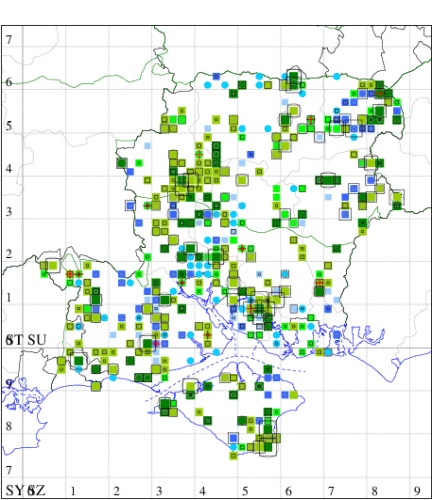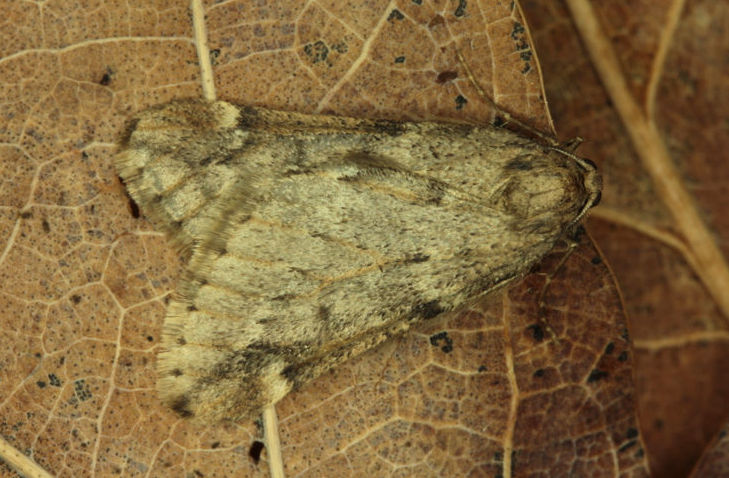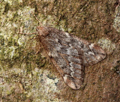March Moth
Alsophila aescularia
Checklist Number70.245 [B&F: 1663]
Verification
Record will be accepted (subject to date and location checks)
Classification
| Family: | Geometridae |
| Subfamily: | Ennominae |
| Genus: | Alsophila |
| Species: | aescularia |
| Authority: | ([Denis & Schiffermüller], 1775) |
Common in open woodland, parks and gardens throughout the British Isles. Widespread and common in Hampshire and on the Isle of Wight. Wingspan male 34-38 mm, female wingless. Male has a distinctive resting posture and shape, with narrow, overlapping forewings and straight costa, giving the appearance of an arrow-head, and the forewing shows a distinct dentate subterminal fascia; the flightless female is very easy to overlook, but can be distinguished from other flightless females by the brown anal tuft and complete absence of wings. Larva feeds on numerous broad-leaved trees and shrubs, including Oak, Hawthorn, Blackthorn and Crab Apple, over-wintering as a pupa.


The abundance in each month is indicated as follows:
 No records
No records Very occasional
Very occasional Irregular
Irregular Uncommon
Uncommon Off-peak, but not unusual
Off-peak, but not unusual Off-peak, but not unusual
Off-peak, but not unusual Main flight time
Main flight time| J | F | M | A | M | J | J | A | S | O | N | D | |
|---|---|---|---|---|---|---|---|---|---|---|---|---|
| Adult |  |  |  |  |  |  |  |  |  |  |  |  |
| Larval |  |  |  |  |  |  |  |  |  |  |  |  |





